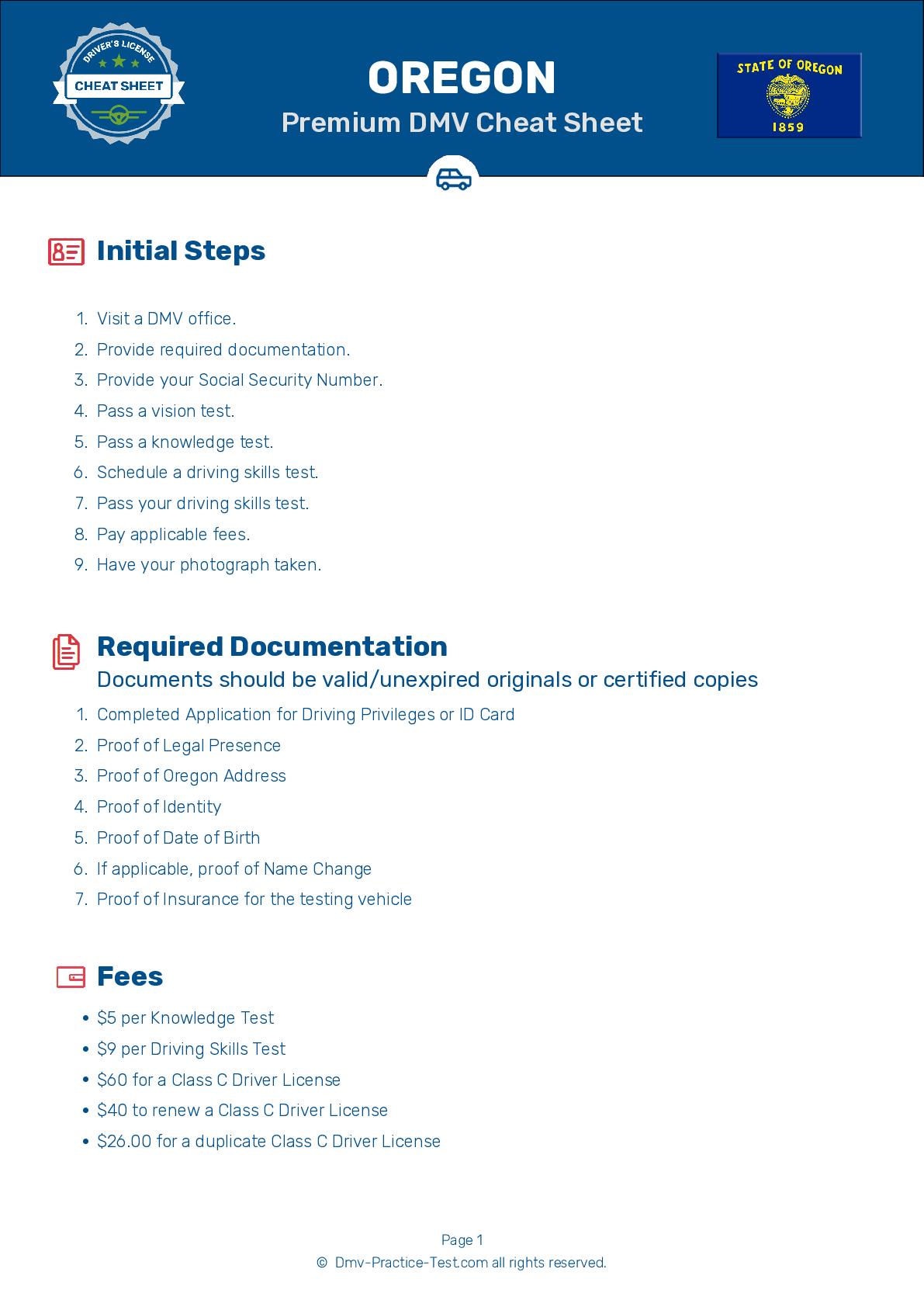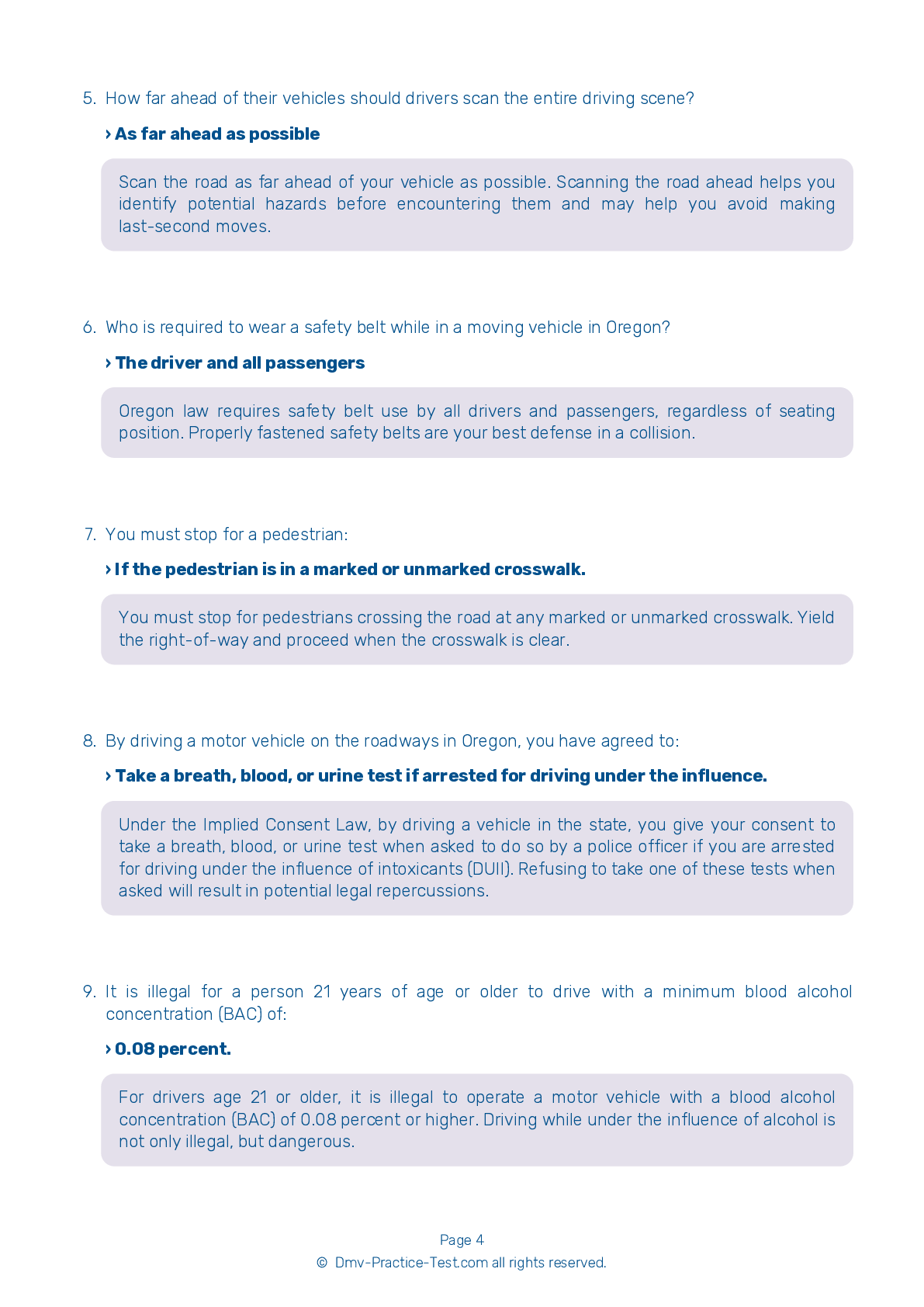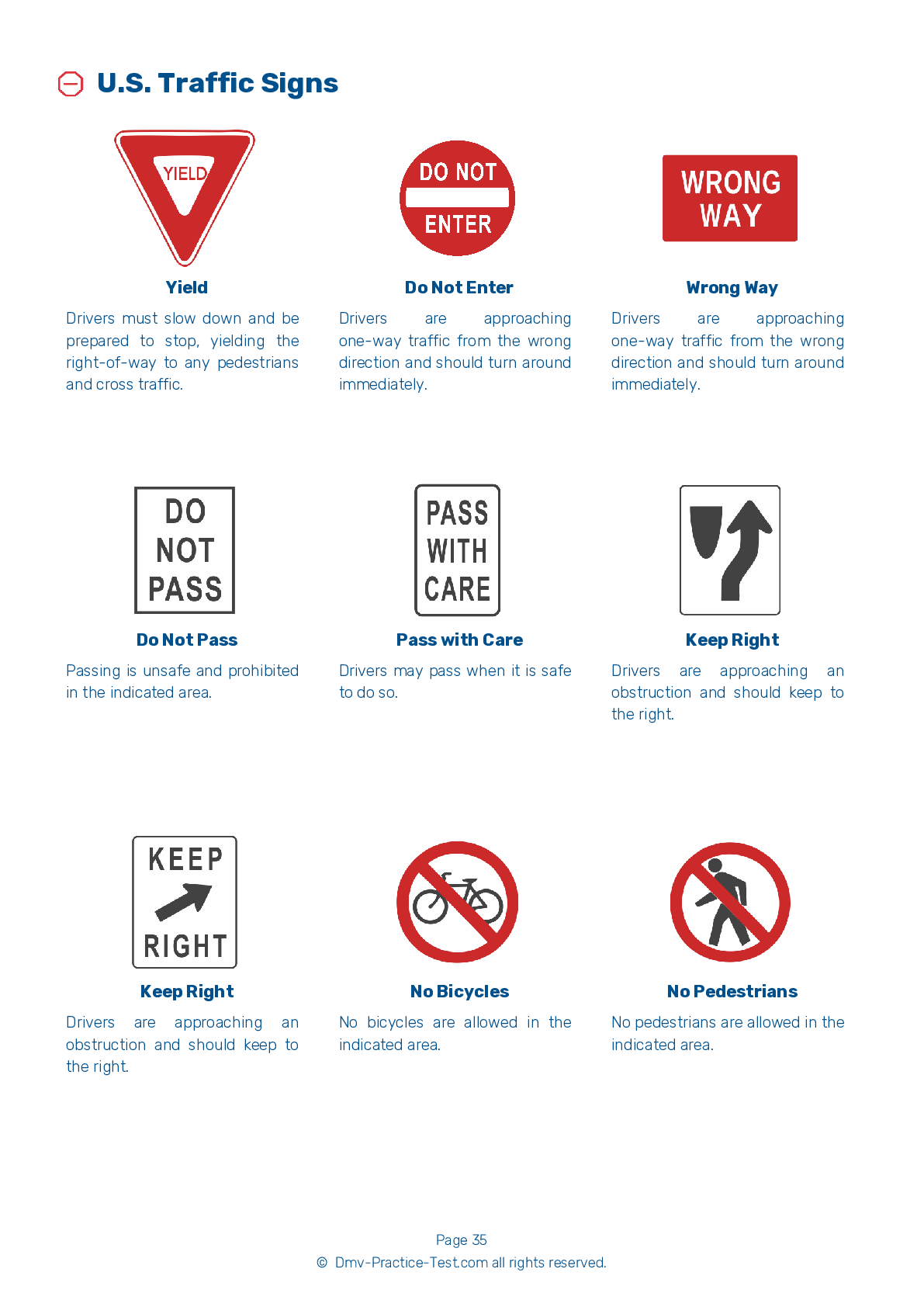FREE Oregon DMV Practice Test #19 Page 5 of 5
The practise exams for the Oregon DMV have been updated for January 2025. It includes questions based on the most important traffic signals and regulations for 2025 from the Oregon Driver Handbook. To study for the DMV driving permit test and driver's licence exam, use actual questions that are very similar (often identical!) to the DMV driving permit test and driver's licence exam.
Each question on the practise exam has a tip and explanation to help you recall the ideas. Questions about traffic rules, traffic signs, and driving statutes, as well as knowledge from the Driver Handbook, will be included in the written portion of the official Oregon DMV test.
You must properly answer 28 of the 35 questions to receive a passing mark. Use the Oregon Department of Motor Vehicles' practise exam to help you prepare for your instruction permit or driver's licence.
The DMV exam is offered in a variety of languages.
Using any form of testing help will result in an automatic fail, and the DMV may take further action against your driver's licence, so avoid it.
29 . Crossbuck signs indicate:
Crossbuck signs tell drivers to yield to trains at a railroad crossing. Drivers should not try to outdrive a train.
30 . Allow a larger space cushion than usual when stopping:
You should allow more space in front of your vehicle than usual when you are stopped on an uphill slope. If the vehicle in front of you rolls backward toward your vehicle when traffic begins to move again, it is less likely that there will be a collision.
31 . You may drive around or under a gate that is being lowered or raised at a railroad crossing:
Flashing red lights, lowered crossing gates, and/or bells at a railroad crossing mean that you must come to a complete stop. You must not go across the tracks until the lights and bells have stopped and the crossing gates are completely up. Do not drive around or under a gate that is moving up or down.
32 . You should honk your horn when you:
Your horn should be used as a warning in situations where you think another driver or a pedestrian does not see you. For example, if a child begins to run into the street in front of your vehicle, you should sound your horn.
33 . It is important to slow down:
You should always slow down when driving on narrow or winding roads, near intersections, near railroad crossings, on hills, in sharp or blind curves, where there are pedestrians or driving hazards, and when the roads are wet or slippery.
34 . A work zone:
Work zones are often stationary, but they may also be present in the form of moving vehicles striping lines, mowing, or removing snow. Work zones are marked by orange signs with black lettering or symbols. Slow down and pay extra attention when approaching or driving through a work zone.
35 . Your first response to reduced visibility should be:
Reducing your speed should be your first response to decreased visibility and dangerous road conditions.
See the exact questions that will be on the 2025 Oregon DMV exam.
99.2% of people who use the cheat sheet pass the FIRST TIME
LT gives us an insight on how the cheat sheet provided her with all the study questions she needed before taking her test.
Joe initially studied with the handbook and failed his test, he eventually found us online, studied and pass his test the first time around.



